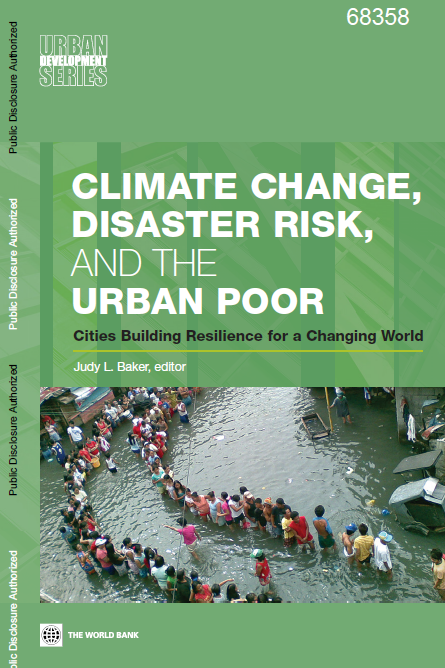
CLIMATE CHANGE, DISASTER RISK, AND THE URBAN POOR
Cities Building Resilience for a Changing World
Judy L. Baker, editor
Foreword
Th e number of people living in slums is on the rise all over the developing world. Increasingly, as cities grow, marginal land is consumed by residents who cannot aff ord to live elsewhere. Th is land is oft en on steep hillsides, fl ood plains, coastal zones, or situated near hazardous waste, putting residents at high risk from the impacts of climate change and natural hazards. Slum dwellers typically live in poor quality and overcrowded housing, and have limited access to water, energy, sanitation, and solid waste services. A heavy rain can quickly turn to a disastrous fl ood. Such fl ooding can destroy the assets of the poor, halt economic activity, destroy their productivity, and interrupt their income. It can contaminate the water supply, lead to disease, and displace populations.
This study calls on cities to take a lead role in proactively addressing the risks of climate change and natural hazards at the local level, with a focus on populations at highest risk. It suggests a number of actions that cities can take to build resilience, beginning with mainstreaming pro-poor risk reduction policies into urban planning and management. Such policies—including those dealing with land use, relocation, or new development come with difficult trade offs that must be carefully balanced in consultation with stakeholders at the local level. Th ey also come with substantial fi nancing needs that must be met through public and private resources, and will require new fi nancing opportunities. Th e cities of the Mayor’s Task Force on Climate Change, Disaster Risk, and the Urban Poor—Dar es Salaam, Jakarta, Mexico City, and São Paulo—provide examples of good practice at the local level to address risk, through slum upgrading programs, early warning systems, safety net programs, and adaptation planning. Such examples demonstrate what is possible when local governments work across boundaries—both administrative and institutional, and in collaboration with communities—to develop and implement sustainable solutions.


































